Disaster in the Drakensberg Mountains. Who could stand behind the death of the president?
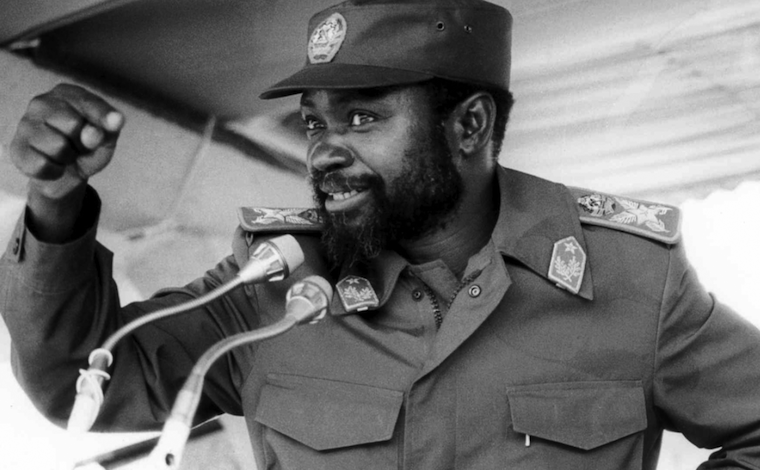
Zamora Machel (1933-1986) was one of the founders of the Mozambican national liberation movement. In Africa, he was called “Black Stalin”, and the South African media, controlled by the apartheid regime, argued that the Soviet Union was preparing Machel for the position of dictator for all of South Africa - Mozambique, Angola, Rhodesia. Zamora Moisesh Machel came from an ordinary peasant family of one of the groups of the people of Shangaan (Tsonga). His father worked for some time in South Africa, and then, returning to his homeland in Portuguese Mozambique, became the religious leader of one of the local Christian-African sects (Christian-African sects combine Christianity with elements of traditional African cults). Machel graduated from four classes of elementary school, then briefly attended high school, then he studied for four years at a Catholic seminary.
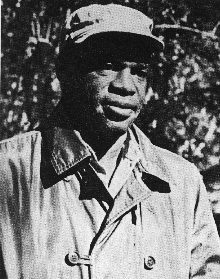 The founder of the Mozambican national liberation movement, a senior contemporary of Machel Eduardo Mondlane (1920-1969), also descended from the people of Shangaan. True, Mondlane (pictured) was a much more educated man - one of the 16 sons of the tribal leader, he was educated at the University of Lisbon, then defended his doctoral thesis on sociology at Northwestern University in Illinois (USA). Although the leadership of Portuguese East Africa offered a post to the educated African in administrative structures, Mondlane refused - he chose the path of the revolutionary struggle for the liberation of Mozambique, became one of the founders of the FRELIMO - Mozambique Liberation Front. The front maintained close ties with Algeria and Tanzania. In Tanzania, there were camps for Mozambican refugees.
The founder of the Mozambican national liberation movement, a senior contemporary of Machel Eduardo Mondlane (1920-1969), also descended from the people of Shangaan. True, Mondlane (pictured) was a much more educated man - one of the 16 sons of the tribal leader, he was educated at the University of Lisbon, then defended his doctoral thesis on sociology at Northwestern University in Illinois (USA). Although the leadership of Portuguese East Africa offered a post to the educated African in administrative structures, Mondlane refused - he chose the path of the revolutionary struggle for the liberation of Mozambique, became one of the founders of the FRELIMO - Mozambique Liberation Front. The front maintained close ties with Algeria and Tanzania. In Tanzania, there were camps for Mozambican refugees. When the Front set the task of moving to a guerrilla war in the territory of Portuguese East Africa, the thirty-year-old Zamora Machel was sent to Algeria to study the methods of guerrilla warfare. Returning from Algeria, he created the first FRELIMO Partisan Training Camp in Tanzania. 25 September 1964 The Mozambican partisans launched attacks on Portuguese positions from the territory of Tanzania, where by this time the main forces of FRELIMO were based. The guerrilla operations were led by Philip Samuel Magaya, who commanded the military wing of the Liberation Front of Mozambique. However, 10 or 11 September 1966, Magaya was killed by one of the partisans, Lawrence Magola, who is believed to have been recruited by the Portuguese secret police PIDE for this purpose. As commander of the FRELIMO armed forces for the deceased, Magayu was replaced by a young and promising Zamora Machel. He quickly made a career in the Mozambican national liberation movement, becoming one of the closest associates of Edward Mondlan. In 1966, he became the FRELIMO Secretary for Defense, and in 1968, the Commander-in-Chief of the armed forces of FRELIMO.
3 February 1969 in the headquarters of FRELIMO in the capital of Tanzania Dar es Salaam thundered an explosion. The bomb was laid in a package with a three-volume book of the famous Russian Marxist Georgy Plekhanov, which was sent as a gift to the leader of the organization. Edward Mondlane died. The question of who will lead the Front for the Liberation of Mozambique after the death of the founder and permanent leader has come up sharply. In the meantime, the Front led the triumvirate - Marcelino dos Santos, Uriya Simango and Zamora Machel. Of course, the struggle for power has intensified in the organization. Zamora Machel and Marcelina dos Santos were able to push Uriy Simango from the Front leadership. In 1970, Zamora Machel became the leader of FRELIMO. It was under his leadership that the Front achieved maximum success by establishing control over most of Northern Mozambique by the 1973 year.
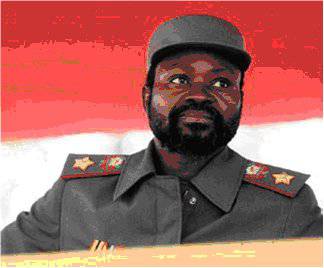 When the “Carnation Revolution” took place in Portugal and Lisbon made the final decision to abandon the continuation of the colonial wars in Africa, the independence of the former Portuguese colonies, including Mozambique, was proclaimed. 25 June 1975, Zamora Machel was officially proclaimed President of Mozambique. The power in Mozambique passed into the hands of FRELIMO, although other Mozambican armed groups did not agree with this.
When the “Carnation Revolution” took place in Portugal and Lisbon made the final decision to abandon the continuation of the colonial wars in Africa, the independence of the former Portuguese colonies, including Mozambique, was proclaimed. 25 June 1975, Zamora Machel was officially proclaimed President of Mozambique. The power in Mozambique passed into the hands of FRELIMO, although other Mozambican armed groups did not agree with this.However, the proclamation of independence of Mozambique did not bring peace to its land. At first, military operations in the territory of Mozambique began to be conducted by the armed forces of neighboring Southern Rhodesia, who suppressed the partisan movement on their territory and sought to prevent the help of the Rhodesian partisans from the Marxist regime of Mozambique. Then in Mozambique Mozambique began a bloody civil war in which the ruling party FRELIMO and oppositional Mozambique national resistance (RENAMO) fought against each other. It was founded in 1977 by a group of former participants in the national liberation war, initiated by politician Orlanda Cristina, with the direct support of the special services of Southern Rhodesia. Andre Matade Matsangaissa (1950-1979), a young officer of the Mozambican army who served in the quartermaster divisions of FRELIMO, became the leader of RENAMO. Since Matsangaiss soon became an oppositionist, he was arrested by the Mozambican authorities and placed in a camp, from where he was released by the Rhodesian commandos during a regular raid in Mozambique. After the liberation, Matsangaisse was offered to lead the anti-government guerrilla movement in Mozambique. So it was RENAMO. However, October 17 1979, Matsangaissa was killed in one of the battles with the troops of FRELIMO, after which Afonso Dlakama (born 1953), one of the field commanders of the anti-government partisans, became the leader of Zamora Machel.
The civil war in Mozambique has become one of the local manifestations of the global confrontation between the Soviet Union and the United States of America. The FRELIMO government received support from the USSR, Cuba, and other socialist countries. In turn, RENAMO was supported by Southern Rhodesia, then by South Africa and Malawi. Naturally, RENAMO was also assisted by the American special services, who sought to prevent the further spread of Soviet influence in South Africa. Since Mozambique offered open and full support to the forces of the African National Congress, who fought against the apartheid regime, South Africa became the main enemy of the Mozambican government in the region. Naturally, Zamora Machel, who used to be very popular in the countries of South Africa and closely connected with the countries of the socialist bloc, caused particular hatred among the South African ruling circles.
The raids of South African-backed armed units on Mozambican territory continued even after Zmora Machel signed Xenumx Machel with South African Prime Minister Peter Botha non-aggression agreement, according to which Mozambique expelled several hundred representatives of the African National Congress. Thus, the situation in Mozambique remained very tense. Much more powerful players were behind the confrontation between the parties to the conflict, regional politicians, including Samora Machel, being the hostages of the complex relations between them.
Early in the morning of 19 on October 1986, the Tu-134 plane flew from the capital of Mozambique, Maputo, on which there were 9 crew members and 38 passengers on board. After 1 an hour, 55 minutes the plane arrived in Lusaka - the capital of Zambia, where it was fully fueled and flew to 7.46 in Mbale to Uganda. In Mbal, the plane arrived at 09.02. In Mbalé, the president of Mozambique, Zamora Machel, and his assistants and members of the presidential guard took the plane. At 16.38, the Tu-134 aircraft, carrying the crew of 9 and 35 passengers, headed for Maputo.
The Tu-134 aircraft (serial number 63457, serial 59-09), released by the Kharkov aircraft factory 30 September 1980, was sent to Mozambique. That is, on the 1986 year it was a fairly new car. Its last repair was made in August 1984 of the year in Minsk - two years before the disaster. 1 August 1986 aircraft was serviced, as a result of which two engines D-30-II were replaced with D-30-III, after which the model of the aircraft changed its name to Tu-134-3. The aircraft served the Soviet crew - qualified pilots and technicians. The last flight of the aircraft went: 48-year-old aircraft commander Yuri Novodran, 29-year co-pilot Igor Kartamyshev, 48-year navigator Oleg Kudryashov, flight mechanic Vladimir Novoselov, 39 year-old radio operator, and four flight attendants.
When the plane was approaching the air zone of Mozambique, the airborne operator contacted the control center aviation in the capital of Maputo. On board the aircraft reported the passage of the Kurl beacon. The plane planned to land at Maputo at 19:25 - in less than an hour. At 19:02, the flight attendant announced that the aircraft was ready for decline. At 19:10 the plane changed course by 38 ° towards the hills. The following dialogue took place between the commander and the navigator at 19:11:28:
- The commander of the aircraft: E ... Th, some turns doing? Could not directly, b ... I!
- The VOR navigator points there.
After this dialogue, ILS and DME disconnected. In this situation, the aircraft crew was disoriented, but did not take any action, considering that they would be given a direct approach to the Maputo 23 strip. In 19: 21: 01 and 19: 21: 32, a dangerous ground approach system worked, but the plane did not stop descending and crashed into the rock at an altitude of 666,6 meters and completely collapsed. This happened on the territory of South Africa, not far from the South African-Swazi border. In a plane crash that has become the largest in stories Mozambique, 34 people were killed: 8 crew members (only the flight engineer managed to survive) and 26 passengers. Among the dead was the President of Mozambique, Zamora Machel.
As head of state of the deceased, Zamora Mashela was replaced by Secretary for External Relations of the Central Committee of FRELIMO, Major General Joaquim Chissano (in the photo). November 3 1986 was approved by the Chairman of FRELIMO, and November 6 1986 was elected President of Mozambique. Chissano was known as a supporter of the pragmatic line in the domestic and foreign policy of the Mozambican state, which was very significant in the period of restructuring in the USSR that was a turning point in world history.
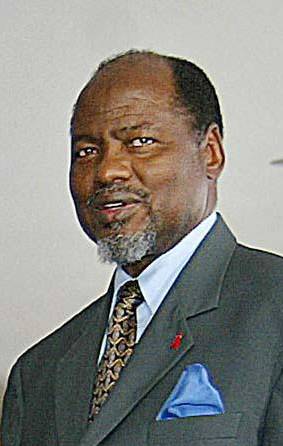
Naturally, the mysterious death of President Zamora Machel in a plane crash gave rise to many versions that the plane crash was rigged by any external forces to eliminate a popular and independent African politician. The most common version for both internal and external use remains the version that South African security services had a hand in the plane crash. For example, in 2004, one Mr. Lowe, who previously served in the South African intelligence services, said that the plane crash was organized on the initiative of former South African President Peter Botha and South African leaders. Allegedly, Zamora Machel was still alive after the plane crash, and the South African intelligence services who arrived at the scene of the tragedy gave him a lethal injection, as a result of which the head of the Mozambican state died.
According to the South African wine version, the South African military command specifically installed a false radio beacon, which led to the death of the aircraft. Local residents told reporters that shortly before the disaster, a strange military tent appeared in the mountains. After the tragedy occurred, this tent disappeared. Naturally, such reports have contributed to the increasing dissemination of a wide variety of rumors about the true causes of the death of Zamora Machel. "The totality of all the circumstances of the death of the aircraft left no doubt that this was the result of sabotage," said then Deputy Minister of Civil Aviation of the USSR Ivan Fedotovich Vasin.
At the same time, the influential Mozambican politician Zhansito Soares Velosu, who was a member of the political bureau of the Central Committee of FRELIMO and who held the post of Minister of State Security in Mozambique, in his memoirs told the "Soviet" version of the death of the aircraft with President Machel. According to Veloz, the Soviet leadership was displeased with the behavior of Zamora Machel, who in the middle of the 1980s. began to lean in favor of normalizing relations with Western countries and the country's transition to the path of liberalization of political and economic life.
However, it should be noted that in the Soviet Union 1986, Mikhail Gorbachev was already in power and the Soviet country itself gradually began to turn towards the rejection of the communist ideology and the normalization of relations with the West. After the death of Machel, in 1992, the President of Mozambique, Joaquim Chissano, signed a peace treaty with the rebel movement RENAMO. The civil war in Mozambique is over. Interestingly, the widow of Zamora Machel Graça Machel subsequently married South African leader Nelson Mandela, thus having twice been the first lady of two different African states.
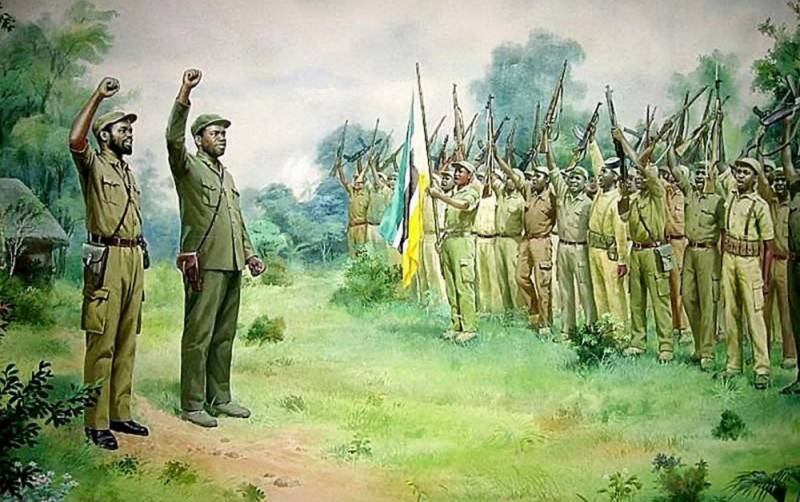
Information